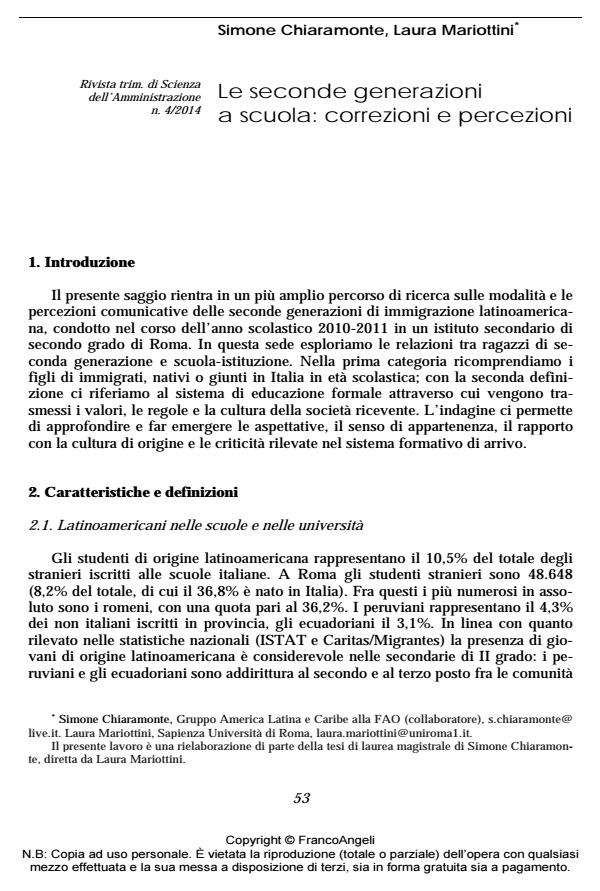Second generation of migrants at school: perceptions and corrections
Journal title RIVISTA TRIMESTRALE DI SCIENZA DELL’AMMINISTRAZIONE
Author/s Simone Chiaramonte, Laura Mariottini
Publishing Year 2015 Issue 2014/4
Language Italian Pages 17 P. 53-69 File size 110 KB
DOI 10.3280/SA2014-004004
DOI is like a bar code for intellectual property: to have more infomation
click here
Below, you can see the article first page
If you want to buy this article in PDF format, you can do it, following the instructions to buy download credits

FrancoAngeli is member of Publishers International Linking Association, Inc (PILA), a not-for-profit association which run the CrossRef service enabling links to and from online scholarly content.
In this paper, we explore the relationship between young people of the second generation of migrants and the school institution. The research was conducted in a professional institute for tourism in Rome. Data are composed by sociolinguistic interviews, evaluation texts and extralinguistic informations concerning Latin American students. The analysis of the texts corrections reveals the relationship between teacher and student and, more generally, the relationship between culture of origin and arrival educational system. Moreover, data reveal the construction of a new role of some of the students that serves as a bridge between ingroup and outgroup and avoids the reproduction of social differences and disparities. Starting from data, it is possible to outline an overall picture of the identities, expectations and needs of the second generation of migrants.
Keywords: Latin American migration, school, second generation of migrants
Simone Chiaramonte, Laura Mariottini, Le seconde generazioni a scuola: correzioni e percezioni in "RIVISTA TRIMESTRALE DI SCIENZA DELL’AMMINISTRAZIONE" 4/2014, pp 53-69, DOI: 10.3280/SA2014-004004